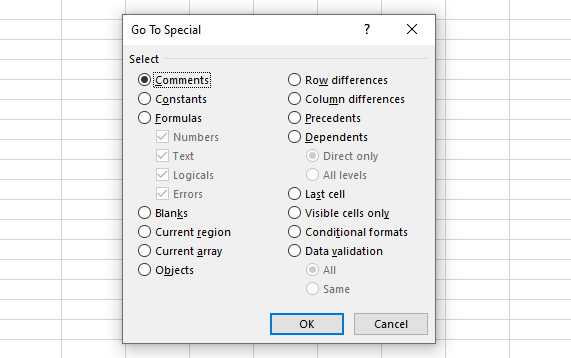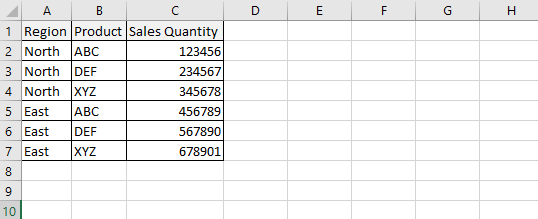Excel VBA: Using the SpecialCells Method to Select Specific Cells
By Hemanta Sundaray on 2022-05-28
In the Excel interface, the Go To Special dialog box (Home⇒Find & Select⇒Go To Special) has many incredibly useful selection tools that we can use to select cells that meet a certain criteria.
We can simulate the Go To Special dialog box in VBA by using the SpecialCells method, which has the following syntax:
RangeObject.SpecialCells(Type, Value)The SpecialCells method has two parameters: Type and Value. Type is one of the xlCellType constants:
- xlCellTypeAllFormatConditions
- xlCellTypeAllValidation
- xlCellTypeBlanks
- xlCellTypeComments
- xlCellTypeConstants
- xlCellTypeFormulas
- xlCellTypeLastCell
- xlCellTypeSameFormatConditions
- xlCellTypeSameValidation
- xlCellTypeVisible
Set one of the following optional Value constants if you use xlCellTypeConstants or xlCellTypeFormulas:
- xlErrors
- xlLogical
- xlNumbers
- xlTextValues
For example, consider the following dataset:
Though the dataset looks tidy, the blank cells in the Region column make it difficult to sort the dataset.
In such a scenario, we can use the SpecialCells method to fill the blank region cells quickly using the region found above them.
Sub FillIn()
On Error Resume Next
Range("A1").CurrentRegion.SpecialCells(xlCellTypeBlanks).FormulaR1C1 _
= "=R[-1]C"
Range("A1").CurrentRegion.Value = Range("A1").CurrentRegion.Value
End SubIn this code snippet above, Range("A1").CurrentRegion refers to the contiguous range of data in the report.
The SpecialCells method returns just the blank cells in that range. This particular formula fills in all the blank cells with a formula that points to the cell above the blank cell. The code snippet on line 8 is a fast way to simulate using the Copy and Paste Special Values commands.
The following figure shows the results:
After the macro runs, the blank cells in the Region column have been filled with data.


